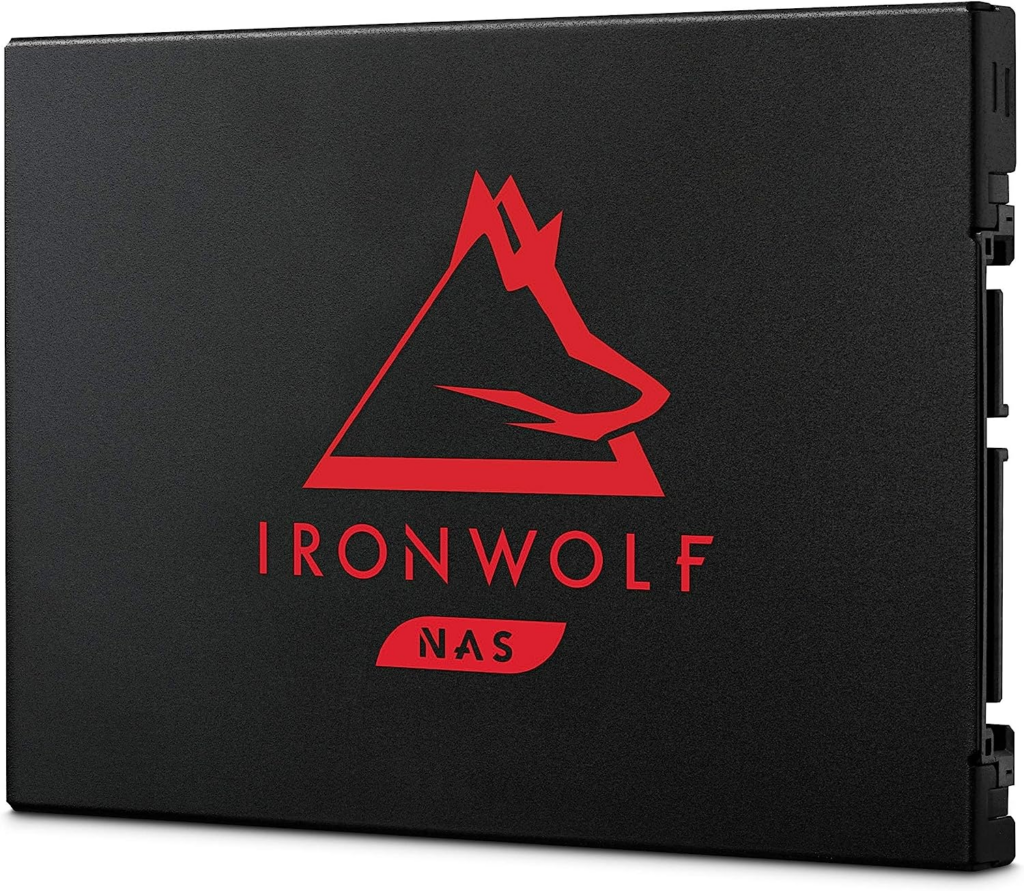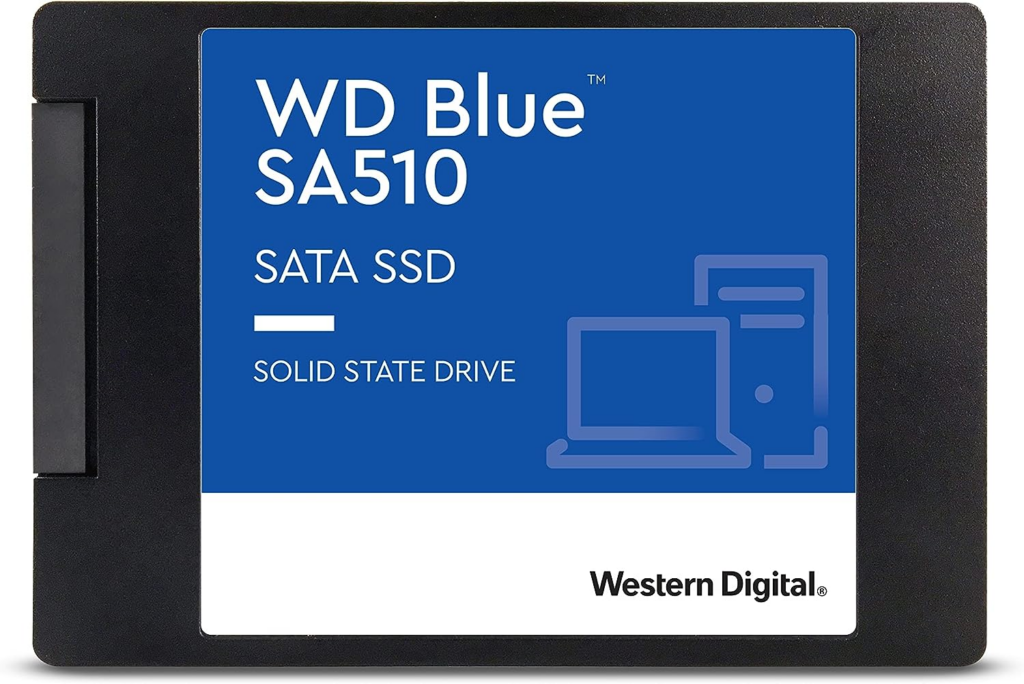Hard drives have traditionally been the preferred storage medium for populating a NAS, but flash storage in SSDs has gained in favor as NAS customers want quieter and quicker drives. The best SSD for NAS have come down in price in recent years, allowing for a significantly better price-per-GB, and we’ll show you our favorites for use within the significant enclosures.
If you’re considering upgrading your network-attached storage (NAS) system with solid-state drives (SSDs), you should know which drives are the most dependable, capable, and cost-effective.

When creating a file storage server, you want to be able to store massive volumes of data securely and reliably. The hard drive in your system will influence how secure your data is. That is why choosing the correct drives for your NAS is critical. When evaluating different product offers, we decided to look at the 1TB storage versions of each SSD. In 2024, 1TB drives provide a reasonable balance of cost and performance. After weeks of deliberation, we’ve compiled a list of the top SSDs for NAS in 2024:
Best SSD for NAS in 2024
Western Digital WD Red SA500
The Red SA500 from Western Digital is a 2.5-inch SSD designed for use inside a NAS box. With speeds of up to 560 MB/s and no moving parts, this drive consumes less power than mechanical competitors.
Pros:
- 560 MB/s max.
- 2,500 TBW and higher.
Cons:
- Up to 4TB.
- Expensive Capabilities.
The Western Digital Red SA500 is the best SSD for NAS use, owing to the value it provides. It is less expensive than its immediate competitor, the Seagate IronWolf 125. Although it does not have the same endurance rating as the SA500, it is good for keeping your data safe without moving parts. The drive family is available in 500 GB, 1 TB, 2 TB, and 4 TB sizes. This is significantly more limited than mechanical drives and will be seen with various NAS SSDs.

Removing any moving parts is where these drives hit back at HDDs. An SSD, such as the WD Red SA500, stores data using energy and cells. As a result, these drives are ideal for sustained data transmission, with rates of up to 560 MB/s and an endurance rating of up to 2,500 TBW, which implies you shouldn’t have any issues with the SSD before writing 2,500 TB of data. This varies depending on capacity, with greater capacity drives providing better endurance.
Seagate IronWolf 125
The Seagate IronWolf 125 provides consistent transfer speeds of up to 560 MB/s, endurance of up to 5,600 TBW, and capacities of up to 4TB. All of this makes this solid-state drive family ideal for usage inside a NAS. As long as you can ignore the hefty price per GB.
Pros:
- Up to 560 MB/s.
- A maximum of 5,600 TBW.
Cons:
- Up to 4 TB.
- Expensive Capabilities.
The best NAS is only as good as its storage drives. As a result, we recommend either the top-rated Western Digital SSD or the Seagate IronWolf 125. The Seagate IronWolf 125 series is slightly more expensive than the Western Digital competition, but it offers more endurance with up to 5,600 TBW. As a result, these drives are ideal for storing data and SSDs for constantly writing fresh data to the server. Capacities are limited to 4 TB, as is Western Digital’s offering.

Speeds are the same, with up to 560 MB/s, which is about as good as we’ll see from SATA III SSDs. Still, it’s pricy, and you’ll have to work around the fact that the modest capacities will limit how much can be kept on the NAS, but the need for moving parts and lower power consumption make these SSDs worth considering.
Western Digital Blue SA510
Western Digital’s Blue SA510 SSD is an excellent deal for a laptop or desktop PC with a spare SATA connector. It’s also a terrific place to store frequently accessed games and software, with speeds of up to 555 MB/s and capacities of up to 4TB.
Pros:
- Low cost.
- 5-year warranty on capacities up to 4TB.
Cons:
- Not intended for use with NAS.
- Insufficiency in endurance.
- Slower rates.
Typically, we advise against utilizing desktop or laptop SSDs inside a NAS, but the expense of flash storage built for servers might put many people off. If you absolutely must have such a drive, we recommend the Western Digital Blue SA510. These drives are inexpensive and cheerful, with the same capacities as the WD Red and Seagate IronWolf NAS SSD series. You won’t be able to rely on these discs for long-term use, and numerous backups are strongly advised in case they fail.

The Blue SA510 excels with its low pricing per GB and five-year warranty, which is uncommon for NAS SSDs. It may not be the fastest SSD on the market nor include all of the advanced features and interfaces with NAS operating systems. Still, it is a cost-effective solution to transition from mechanical drives to flash storage.
Western Digital Red SN700
The Red SN700 from Western Digital is an M.2 NVMe SSD with speeds of up to 3,430 MB/s. The drive’s capacity is limited to 4 TB, although it excels at SSD caching. This procedure enables the NAS to use the drive as slower RAM, improving overall system performance.
Pros:
- Up to 3,430 MB/s.
- Outstanding endurance.
- Excellent for SSD caching.
Cons:
- M.2 form factor is costly.
M.2 slots are becoming increasingly common in NAS enclosures. Drives with such expandability, such as the Western Digital Red SN700, would be perfect for usage inside NAS. The Red SN700 family of M.2 NVMe drives are ideal for data storage or SSD caching, with transfer speeds of up to 3,430 MB/s. The latter enables the NAS OS to effectively use the disc as slower RAM, which can be helpful inside NAS, where RAM cannot be extended further. The most significant disadvantage of these M.2 NAS SSDs is their high pricing.

Also, check the NAS specification sheet to guarantee that you can utilize the M.2 slot for data storage, as not all manufacturers allow it. However, almost any M.2 slot may be utilized for SSD caching, and the Western Digital Red SN700 is a good value option for dependable NAS caching.
Synology SAT5210
Synology collaborated with Seagate to introduce its line of 2.5-inch flash drives. These have excellent endurance ratings and large capacities (up to 7 TB! ) but are far more expensive than comparable NAS SSDs.
Pros:
- Up to 7 TB.
- Outstanding endurance.
Cons:
- Excellent DSM OS integration.
- Expensive up to 530 MB/s.
Did you know that Synology manufactures its own branded drives? The Synology SAT5210 is a 2.5-inch SATA SSD family intended for use with Synology NAS and DiskStation Manager (DSM). The operating system can integrate the drives into the NAS and provide complete support for monitoring performance and SSD health. The excellent endurance and up to 7 TB capacity set these drives apart from the competition. As a result, these are the ideal options for a NAS that is wholly packed with capacity mechanical drives.

If you can get past the expensive price tag for the Synology SAT5210 drives and the slower transfer speeds, these are the best options for Synology fans looking for high-capacity and reliable flash storage.
Seagate IronWolf 525
This high-end M.2 NVMe SSD from Seagate supports the newer PCIe 4.0 standard, allowing for super-fast caching and (if your NAS supports it) storage as well. With sequential transfer speeds of up to 5000MB/s, this SSD will significantly increase your NAS’s speed and overall performance.
Pros:
- Fast speeds of up to 5000MB/s explicitly designed for business NAS installations.
- Excellent futureproofing.
Cons:
- Expensive.
If transfer speed is critical to you, the Seagate IronWolf 525 will serve you well regardless of price. This NVMe drive supports PCIe 4.0 (as opposed to PCIe 3.0, supported by cheaper choices), doubling the theoretical speeds over the previous generation. With a suitable NAS, you can achieve insane sequential transfer speeds of up to 5000MB/s. This is excellent for caching because it significantly improves file transfer rates, and if your NAS allows it, you can even utilize it as primary storage.

But don’t worry if your NAS has a PCIe 3.0 port; this drive is backwards compatible, so you can acquire it and be confident that it will operate with your devices for years, even if you upgrade your NAS. Seagate’s integrated 3-year recovery service, which professionally recovers your data if the disc dies, adds to its durability.
How We Selected The Best SSD for NAS By Performance
While NAS-specific SSDs have become more affordable in recent years, they remain a costly option compared to spinning hard drives. Furthermore, SSDs aren’t available in enormous capacities, limiting them to more minor — but high-speed — storage pools. As a result, you must consider how you intend to use SSDs on your NAS, as some are better suited for data storage while others are better suited for caching.
Because of their fast speeds, the two NVMe drives on this list — the WD Red SN700 and the Seagate IronWolf 525 — are best for caching, but they don’t make much economic sense as storage devices. If your NAS offers M.2 slots, we recommend purchasing one of these drives to boost data throughput without replacing your existing hard drives.
Other 2.5-inch SSDs fall somewhere in the center, providing better value while still providing all of the benefits of an SSD, such as silent operation and relatively high speeds. The Western Digital Red SA500 is our top drive selection for NAS data storage. This model has up to 4TB capacities, a reasonable price-per-GB, and a high endurance rating. It’s not nearly as good as Seagate’s IronWolf 125, but it’s significantly less expensive.
We wouldn’t normally advocate using a desktop-class SSD for NAS, but the Western Digital Blue SA510 would be a decent choice if your workload is light or you use your NAS occasionally, such as for backups. For those looking for one of the finest Synology NAS, we propose the company’s Synology SAT5210, which interacts well with the DSM operating system. Check out our recommendations for the best NAS hard drives if you’re merely seeking to stock up on as much storage as possible.
FAQs-
What factors should we consider when choosing an SSD for my NAS drive?
When choosing an SSD for your NAS drive, consider factors such as storage capacity, read/write speed, endurance (TBW – Terabytes Written), reliability, and compatibility with your NAS system. The article highlights some of the best SSDs that excel in these areas.
Are SSDs better than HDDs for NAS drives?
SSDs generally offer better performance than HDDs, with faster data access speeds, lower latency, and no moving parts, leading to increased reliability and durability. However, they are usually more expensive per gigabyte. The article discusses the advantages of using SSDs in NAS setups for high-performance needs.
What are some of the top SSDs for NAS drives currently available?
The article lists several high-performance SSDs suitable for NAS drives, including models known for their speed, reliability, and endurance. Brands like Samsung, Western Digital, and Seagate are often mentioned as top choices for NAS SSDs. The article provides detailed comparisons and recommendations to help you make an informed decision.











